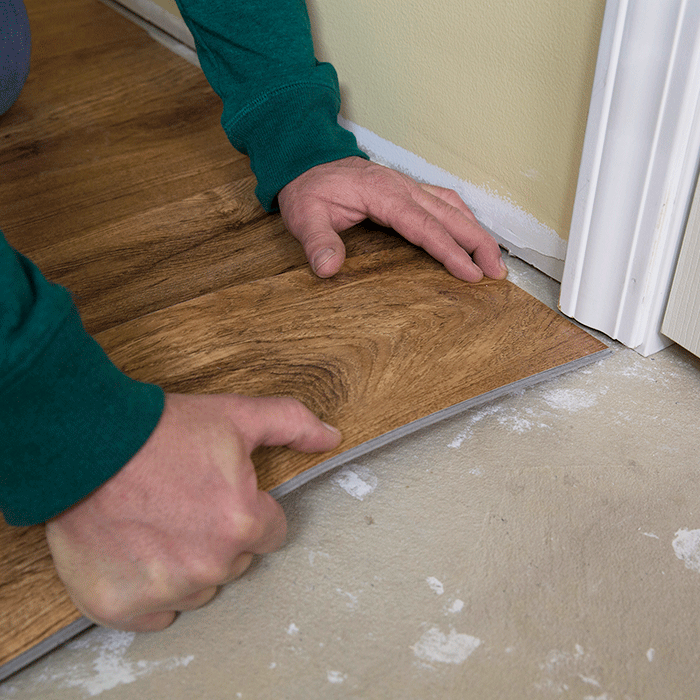How Many Types Of Vinyl Flooring Are There and What Is The Current Name For Linoleum Flooring?
With the wide range of flooring options available today, it can be overwhelming to choose the right one for your space. Regarding vinyl flooring, there are several types to consider, each with its own benefits and characteristics. From luxury vinyl to sheet vinyl and vinyl tiles, understanding the differences between them can help you make an informed decision for your home. Additionally, did you know that the current name for linoleum flooring is actually just that – linoleum? While it may be an older type of flooring, linoleum is making a comeback due to its eco-friendly nature and durability. Let’s explore the world of vinyl and linoleum flooring to discover which option is best for your next project!
The Diverse World of Vinyl Flooring
Before plungIing into the myriad options available in the world of vinyl flooring, it.’s important to understand the diverse range of choices that .ca.t.er to various. tastes and preferences. From traditional sheet vinyl to modern waterproof vinyl composite cores, there is something for everyone in vinyl flooring.
Sheet Vinyl: The Seamless Performer
Performer in high-traffic areas, sheet vinyl is a popular choice for its seamless installation and easy maintenance. It comes in a wide range of designs, from hardwood and tile patterns to modern and unique styles.
Sheet vinyl is budget-friendly and offers excellent durability, making it ideal for busy households or commercial spaces. Its seamless nature also makes it a hygienic choice, with fewer seams for dirt and moisture to seep into.
Luxury Vinyl Planks (LVP): Mimicking the Best
Seamless and stylish, luxury vinyl planks (LVP) are designed to mimic the look of hardwood flooring with added benefits. They come in a variety of wood species, colors, and textures, offering a high-end look without the high maintenance.
Vinyl planks are water-resistant, making them suitable for areas prone to moisture like kitchens and bathrooms. They are also softer underfoot than traditional hardwood, providing a comfortable and warm surface.
Luxury Vinyl Tile (LVT): Versatile and Sophisticated
To cater to those who prefer the look of ceramic or stone tile, luxury vinyl tile (LVT) offers a versatile and sophisticated alternative. With realistic textures and patterns, LVT can transform any space into a luxurious retreat.
World of color options and sizes, LVT allows for creative installation patterns like herringbone or basketweave, adding a touch of elegance to any room. Its durability and low maintenance make it an ideal choice for both residential and commercial spaces.
Waterproof Vinyl Composite Core (WPC)
Versatile and resilient, waterproof vinyl composite core (WPC) flooring is engineered to withstand moisture and everyday wear and tear. It is a popular choice for areas prone to spills and accidents, offering peace of mind and easy cleanup.
Vinyl composite core flooring is softer underfoot than traditional hardwood or tile, making it a comfortable option for prolonged standing or walking. Its waterproof nature also makes it suitable for areas like basements or bathrooms where moisture resistance is important.
Stone Plastic Composite (SPC) Flooring: The Tough Contender
Stone plastic composite (SPC) flooring is a tough contender in the vinyl flooring world, known for its exceptional durability and impact resistance. It is ideal for high-traffic areas or households with pets and children, offering a worry-free flooring solution.
Composite core makes SPC flooring highly stable and resistant to fluctuations in temperature and humidity, making it suitable for various environments. Its easy installation and maintenance make it a practical choice for busy households seeking a long-lasting flooring option.

The Evolution of Linoleum
The Historical Roots of Linoleum Flooring
Roots trace back to the 19th century when linoleum was first developed as a durable and eco-friendly flooring option. Invented by Frederick Walton in 1863, linoleum is made from natural materials such as linseed oil, pine rosin, wood flour, cork dust, and pigments. Its name originated from the Latin words “linum” (flax) and “oleum” (oil), highlighting its linseed oil base.
Linoleum’s popularity grew rapidly as a cost-effective alternative to traditional flooring options like hardwood and stone. By the early 20th century, linoleum became a staple in homes, schools, and businesses for its resilience and vibrant design possibilities.
Linoleum Today: What’s in a Name?
Whats interesting is that linoleum is still manufactured today, but it is now commonly referred to as “lino.” This shorthand term reflects the evolution of the. product and its contemporary appeal to a new generation of eco-conscious consumers looking for sustainable flooring options.
Flooring: Today, linoleum or “lino” comes in a variety of colors, patterns, and styles to suit modern interior design trends. It retains its reputation for being environmentally friendly, durable, and easy to maintain, making it a popular choice for both residential and commercial spaces.

Choosing the Right Type of Vinyl Flooring
Now that you’ve decided to upgrade your flooring with vinyl, it’s time to consider which type is best suited for your space. With so many options available, it can be overwhelming to make a decision. Let’s explore some key factors to consider before making a final choice.
Factors to Consider Before Making a Decision
To ensure you choose the right vinyl flooring for your needs, consider the following:
- Room Usage: Determine the amount of traffic and potential wear and tear the flooring will endure.
- Water Resistance: For areas prone to moisture, like bathrooms and kitchens, opt for waterproof vinyl.
- Budget: Set a budget and explore vinyl flooring options within that range.
Perceiving how these factors align with your specific requirements will help guide you towards the perfect choice for your space.
The Importance of Professional Advice
To ensure you make the best decision for your home, seek advice from flooring professionals. They can offer insight into the most suitable vinyl flooring options based on your needs and preferences.
To make the most informed choice, consider consulting with a professional who can provide valuable recommendations and help you navigate the vast array of vinyl flooring products available.
Plus, professional advice can also assist in addressing any specific concerns or questions you may have about installation, maintenance, or durability of the flooring.
Summing up
Taking this into account, it’s clear that there are several types of vinyl flooring available, including luxury vinyl, engineered vinyl, and sheet vinyl. The current name for what used to be known as linoleum flooring is now called “resilient flooring.” With various options to choose from, homeowners can find a durable and stylish flooring solution that fits their preferences and needs. Whether you prefer the affordability of sheet vinyl or the high-end look of luxury vinyl, there is a vinyl flooring option for every style and budget.







